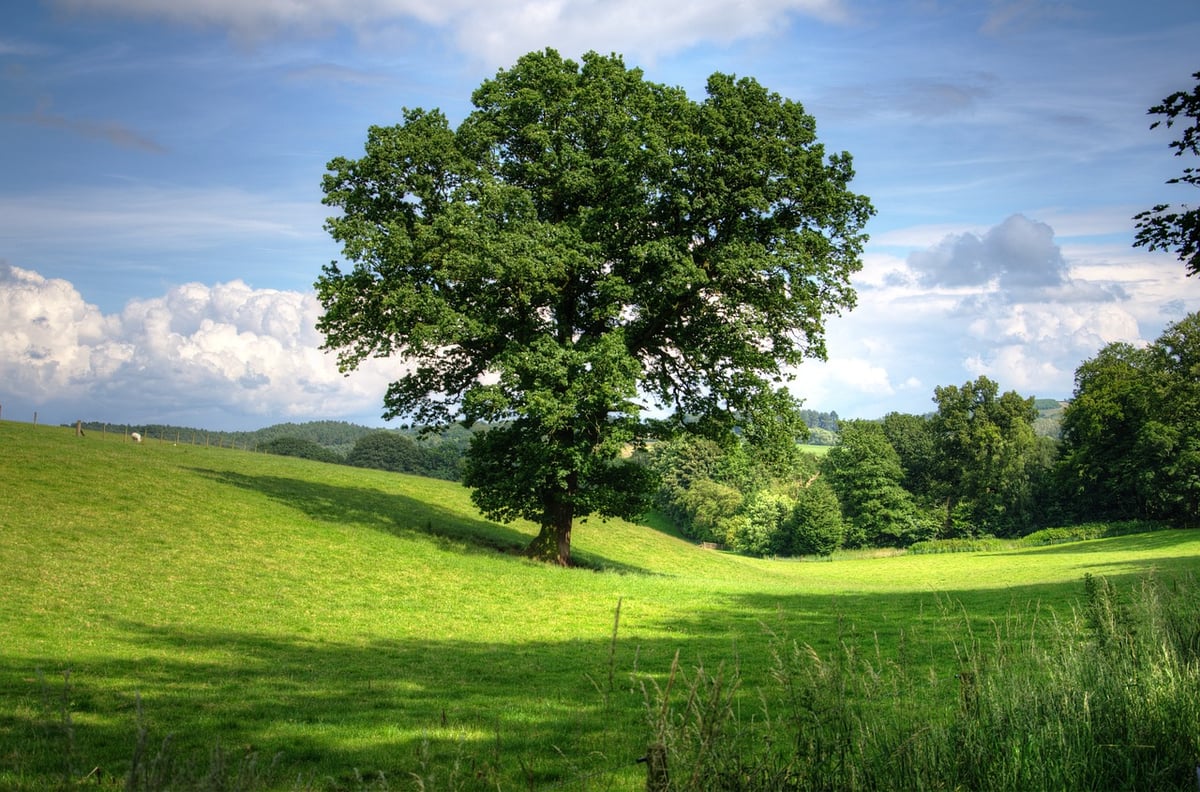The Impact of trees on the world and on living species on earth is important. They give us a link between the past, present and future.
As the largest plants on the planet, trees provide us with oxygen, store carbon, stabilize the soil and give life to the world’s wildlife. They also give us the materials for tools and shelter.
Trees are an important part of the global carbon cycle because they absorb carbon dioxide through the mechanism of photosynthesis.

Trees as carbon sinks
Trees function as terrestrial carbon sinks and remove this greenhouse gas from the air.
Therefore, Planting billions of trees across the world is one of the biggest and cheapest ways of taking CO2 out of the atmosphere to tackle the climate crisis.
Reforestation is the reestablishment of trees and understory plants at a site previously occupied by forest cover.
Additionally, Planting new trees remain vital to reverse the current trends of rising greenhouse gas emissions from fossil fuel burning and forest destruction and bring them down to zero.[1]

Each individual tree removes up to 1.7 kilos of pollutant every year. trees also provide shade from solar radiation and reduce noise. [2] Furthermore, they can reduce wind speeds and cool the air as they lose moisture and reflect heat upwards from their leaves.
It is estimated that trees can reduce the temperature in a city by up to 7°C. Trees also help prevent soil erosion and flooding, absorbing thousands of liters of stormwater. [2]
Trees are vital
Trees are also vital to our water supply, providing high quality water resources: they intercept atmospheric moisture, contribute to cloud and rain formation, reduce erosion and recharge groundwater.
Approximately 75 percent of the world’s accessible freshwater for agricultural, domestic, industrial, and environmental uses comes from forests, with 90 percent of the world's cities relying on forested watersheds for their water supply.
Trees host complex microhabitats
Trees support wildlife where they host complex microhabitats. trees offer habitation and nourishment to a wide varieties’ communities of birds, insects, lichen, and fungi. their trunks also provide the hollow cover needed by species such as bats, tawny owls, woodpeckers and woodboring beetles.
One mature tree can be home to as many as 500 different species. [2] Trees strengthen communities and encourage local pride. Urban woodland can be utilized as an educational modality and to bring groups together for activities like birdwatching and walking.
Tree plantings provide an opportunity for community empowerment and involvement that improves the quality of life in our neighborhoods.
All cultures, ages, and genders have a principal role to participate in a trees care event.[3] Trees are also noble for children to play in and discover their sense of adventure. [2]
Trees also grow the economy where people are attracted to work, live, and invest in green surroundings. Research showed that average house prices are 10-18% higher when properties are close to trees.
Companies benefit from a healthier workforce if there are trees and parks nearby. [2] Green infrastructure such as urban parks and street trees also improve air quality [4] and mitigate heat island effects [5].
Trees and forests change air quality
Trees and forests change air quality through the direct removal of air pollutants, affecting local microclimates and building energy use, and through the emission of volatile organic compounds (VOCs), which can contribute to O3 and PM2.5 formation[6].
Recent evident indicated that trees, particularly low VOC emitting species, can be a viable strategy to help reduce urban O3 levels[7].
Trees remove gaseous air pollution primarily by uptake via leaf stomata, though some gases are removed by the plant surface. For O3, SO2 and NO2, most of the pollution is removed via leaf stomata. [8]
Once inside the leaf, gases diffuse into intercellular spaces and may be absorbed by water films to form acids or react with inner-leaf surfaces.
Trees directly affect particulate matter in the atmosphere by intercepting particles, emitting particles (e.g., pollen) and resuspension of particles captured on the plant surface.
Some particles can be absorbed into the tree, though most intercepted particles are retained on the plant surface. [8]
The intercepted particles often are resuspended to the atmosphere, washed off by rain, or dropped to the ground with leaf and twig fall.
During dry periods, particles are constantly intercepted and resuspended, in part, dependent upon wind speed.[8] Pollution removal by urban trees in the United States has been estimated at 711,000 tonnes (t) per year.[9]
Carbon offsetting with trees
Removing all the world’s forests would release up to 3 trillion tons of carbon that are currently safely sequestered in wood; maintaining our existing forest stock would reduce emissions by at least 15%, helping us to meet global climate commitments.
The world’s forests can absorb approximately 25% of anthropogenic greenhouse gas emissions.
Reducing deforestation would increase the ability of forests to filter our GHGs, particularly if coupled with a reduction in total GHG emission levels.[10]
So, to tackle environmental crises and create natural carbon sequestration, we should aim to dedicate an extremely large percentage of the world’s land surface to ecological restoration, rewilding, and mass tree-planting.


